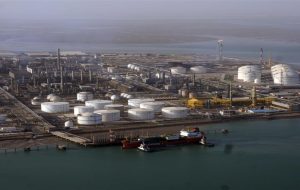
Injecting 117 million cubic meters of gas into power plants to stabilize the electricity grid
The CEO of the National Iranian Gas Company, referring to the coordinated and favorable performance in the gas production chain to refining, announced the injection of 117 million cubic meters of natural gas into the country's power plants.

Oil Minister: Sustainable liquid fuel provided for power plants
The Minister of Petroleum stated that in order to supply gas to power plants, we have delivered a cumulative 3.5 billion cubic meters of gas to power plants since the beginning of this year, and added: "Also, liquid fuel has been supplied to power plants in appropriate and stable volumes so that our dear compatriots do not face any problems or shortages in terms of electricity supply and their electricity needs are fully provided."

Bandar Imam becomes the giant of Iran’s petrochemical paper projects
Bandar Imam Petrochemical, the beating heart of the downstream chain of Iran's petrochemical industry, is currently facing a $1.4 billion project; a project that, in relation to the company's 8 trillion tomans profit, has raised serious questions about the economic logic, financing method, and the silence of Persian Gulf Holding.
Breaking News

Emergency plan to increase daily crude oil production approved

Oil Fluid Separation Unit Launched in South Azadegan

Government competition with the private sector poses challenges to investment in the energy sector

The first phase of water transfer from the sea to Isfahan was completed

Lack of demand is the biggest problem for the country’s CNG industry

Production capacity of supplementary oil and gas well strings increased

Part of the oil flare in the west of the country was extinguished

Iran with 37 gas fields; still dreaming of getting rid of imbalance

Purchasing electricity from home solar systems by Tavanir





